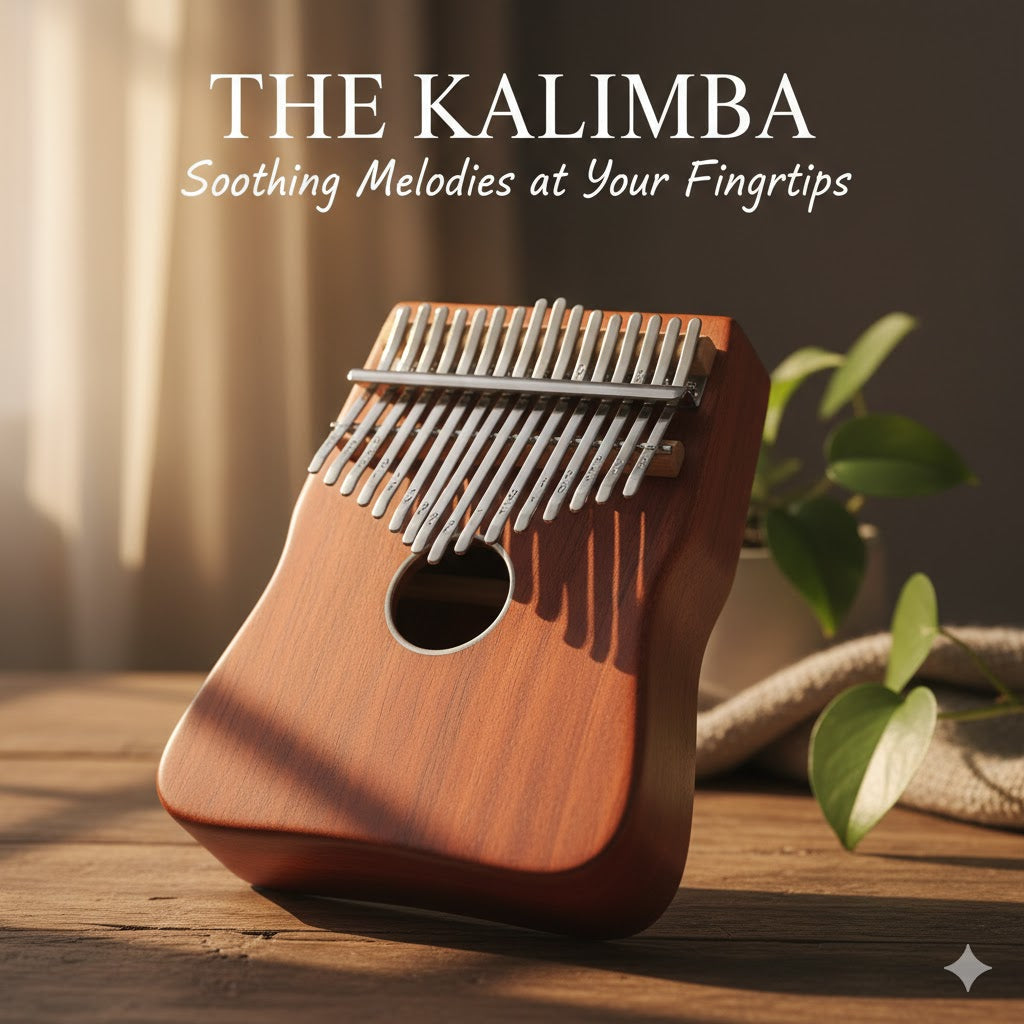🎹 How to Play Kalimba: A Complete Beginner’s Guide

“The kalimba is the perfect instrument to bring melody into your hands. Even if you're brand new to music, you can start making beautiful sounds in just minutes.”
Whether you have a 10-key, 17-key, or more, this guide will walk you through everything you need to know—from holding the instrument to learning songs.
Video demo for starters:
1. What Is a Kalimba? (Quick Background)
The kalimba (also known as thumb piano or mbira) is a plucked idiophone instrument. It consists of metal tines mounted on a resonator (wood or hollow box). You play it by plucking the tines with your thumbs (or fingers). 维基百科+1
It produces a gentle, chiming tone. Its layout often alternates notes (left-right) so melodies and harmonies can be played naturally. Kalimba Magic
2. Parts & Tuning: What You Need to Know
Parts of a Kalimba
-
Tines / Keys: Metal tongues you pluck.
-
Bridge / Bar: Holds the tines in place.
-
Soundboard / Resonator: Amplifies the sound.
-
Sound hole(s): Helps with resonance.
Kalimba Magic has a good rundown of these parts and how they affect tone. Kalimba Magic
Tuning
Your kalimba may drift out of tune over time. You can push tines inward (to flatten) or outward (to sharpen). Most 17-key kalimbas are tuned in C major by default. Kalimba Magic+2YouTube+2
Use a tuner app or reference pitch to retune occasionally.
3. How to Hold & Pluck Correctly
Holding
-
Hold the kalimba in both hands, fingers wrapped around the back.
-
Let your thumbs rest on the front edges, free to pluck.
-
Keep a relaxed grip—not too tight—so resonance is not damped.
Plucking Techniques
-
Use the thumb nails or the flesh side of the thumb to pluck downward.
-
Some players use thumb picks for brighter sound. YouTube
-
Try glissando (sliding across tines) or vibrato for more expressive effect. YouTube
4. Reading Kalimba Tabs & Numbers
Many beginners use numbered tabs (1, 2, 3…) rather than standard musical notation.
-
Each tine gets a number (or a number + apostrophe for higher octave).
-
When a tab shows two numbers together (e.g. “3 5”), you pluck both tines at once as a chord.
-
If there’s a bar line or slash, it indicates timing.
Websites like KalimbaClasses provide many easy beginner songs using number tabs. KALIMBA CLASSES
On forums, new players often say:
“I just search for a video on YouTube, write down the notes and play until I memorize it. Simple and direct.” Reddit
So picking familiar songs helps greatly.